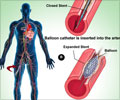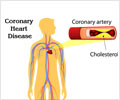
‘Unless there is clarity in the emergency room on what defines a heart attack, patients with chest pain may be wrongly labelled with heart attack and not receive the correct treatment.’
Tweet it Now
Myocardial injury on its own is now considered a separate condition. There are numerous situations which can cause myocardial injury, and therefore a rise in troponin. These include infection, sepsis, kidney disease, heart surgery, and strenuous exercise. The first step of treatment is to address the underlying disorder. As for myocardial infarction, there are different types which require specific treatment. Type 1 is the situation which most people associate with a heart attack. Here a fatty deposit in an artery, called a plaque, ruptures and blocks blood flow to the heart which deprives it of oxygen. Treatment can include antiplatelet medication to stop platelets clumping together and forming a clot, inserting a stent via a catheter to open up the artery, or surgery to bypass the artery.
In type 2, oxygen deprivation is not caused by plaque rupture in an artery but is due to other reasons such as respiratory failure or severe hypertension. Professor Alpert said: "Some doctors have incorrectly called this type 1 and given the wrong treatment, which can be harmful. Treatment should be directed at the underlying condition, for example blood pressure lowering medications for patients with hypertension."
Efforts by doctors to correctly diagnosis myocardial infarction and its subtypes have not been helped by the lack of diagnosis codes in the International Classification of Diseases (ICD). The subtypes of myocardial infarction were first introduced by the joint Task Force in 2007, but were not incorporated into the ICD until October 2017.3,4
Professor White said: "In the consensus document we have expanded the section on type 2 myocardial infarction and included three figures to help doctors make the correct diagnosis. The incorporation of type 2 into the ICD codes is another step towards accurate recognition followed by appropriate treatment. A code for myocardial injury will be added to the ICD next year."
Advertisement
Source-Eurekalert















